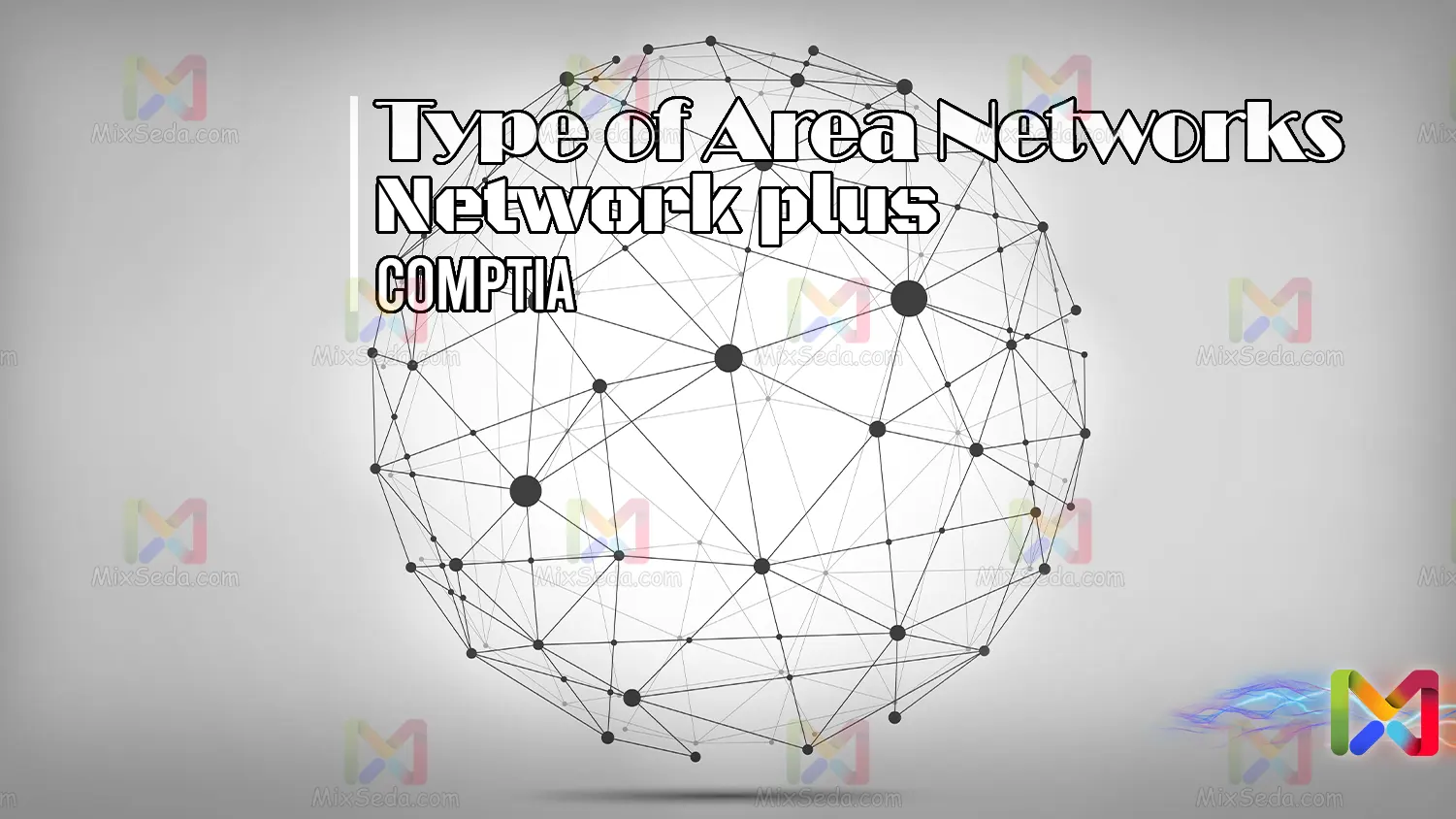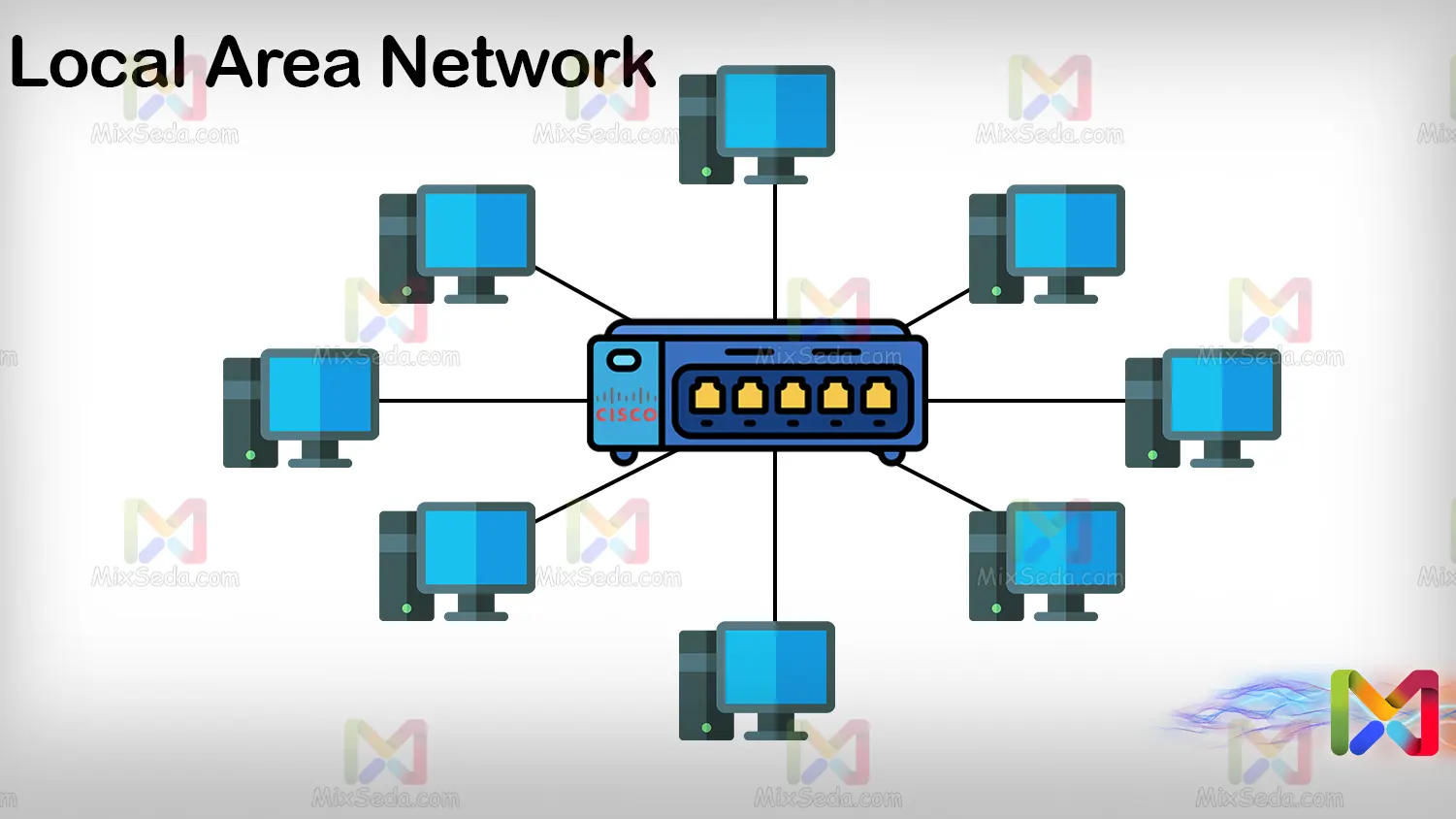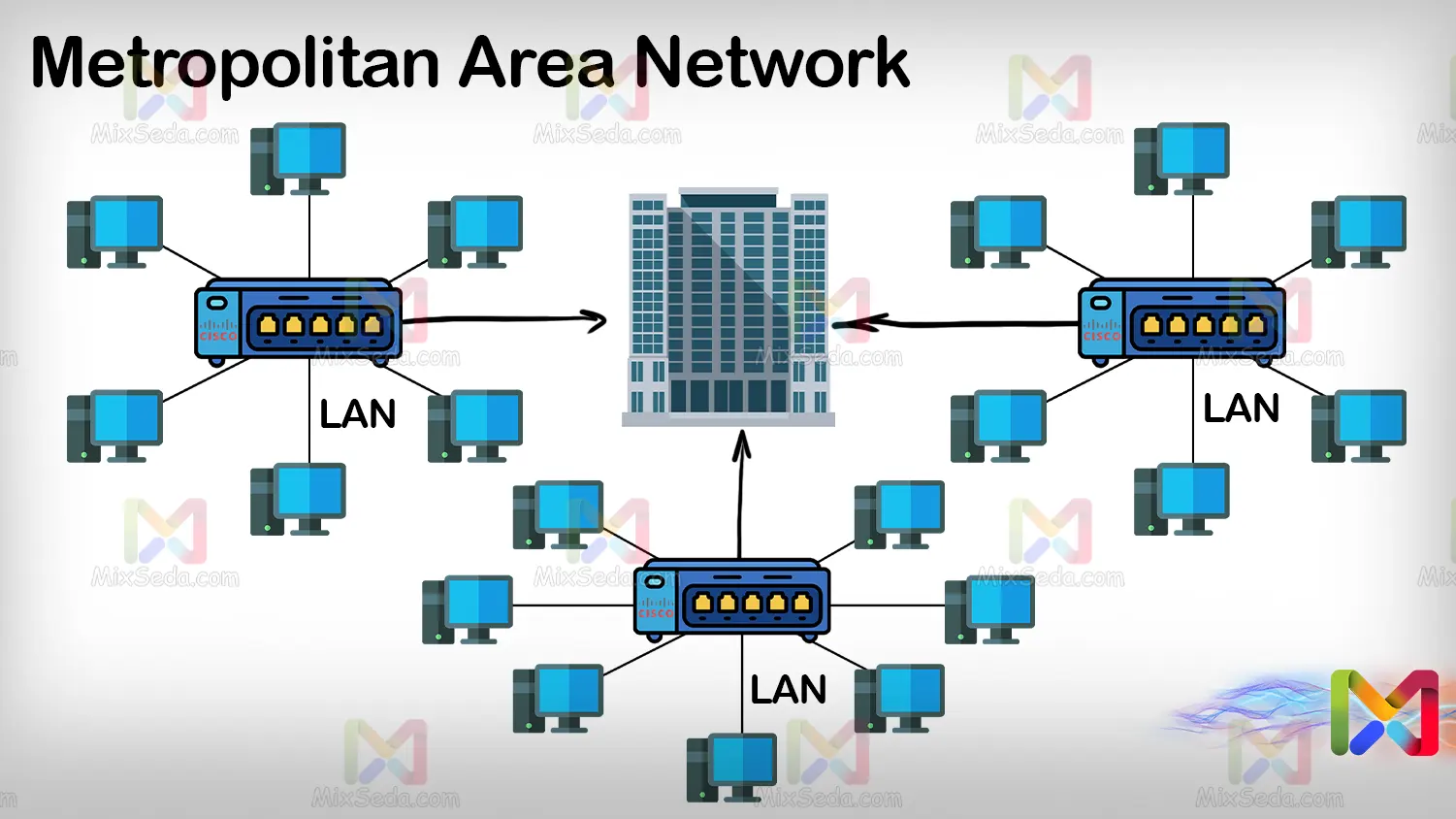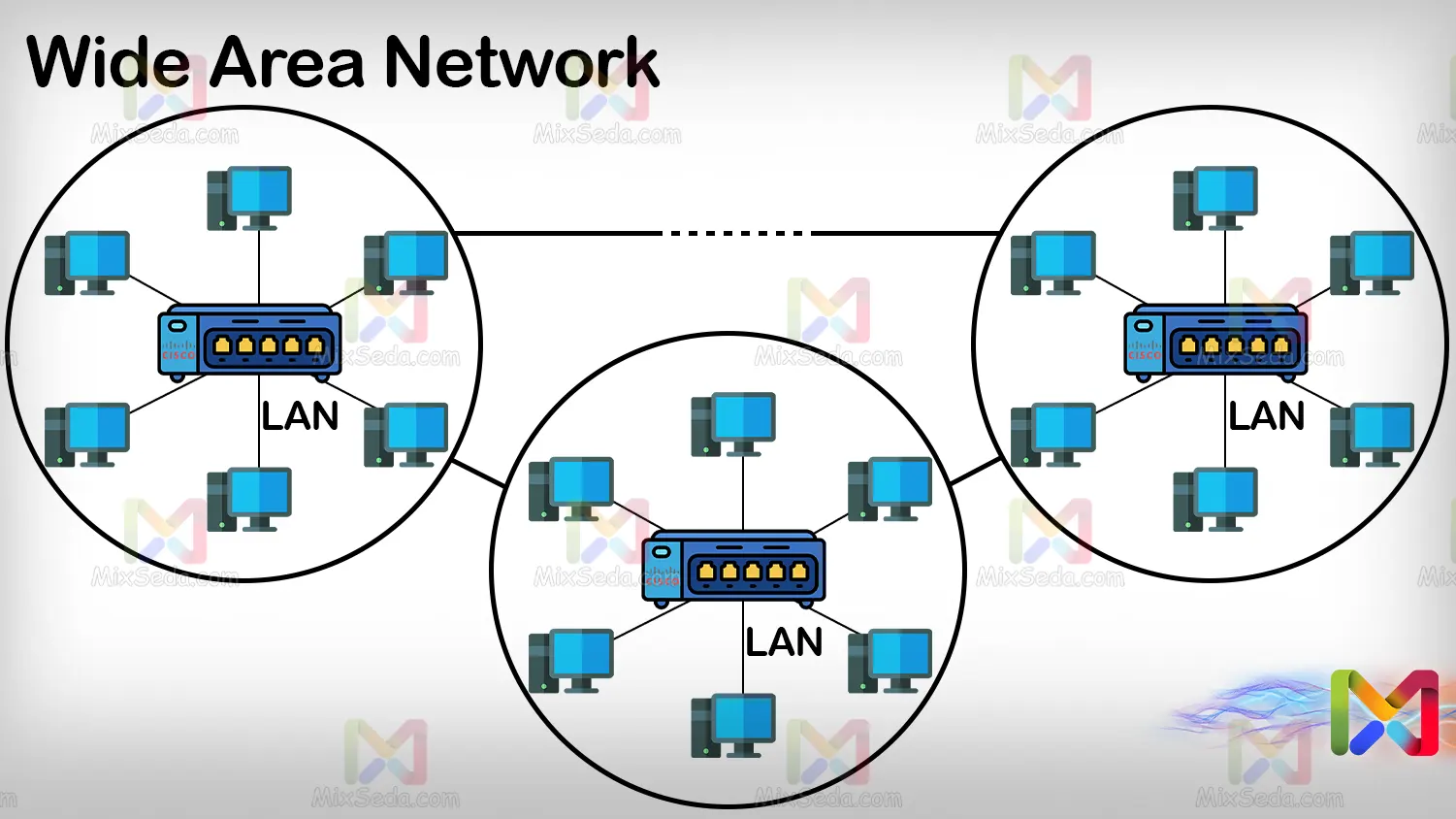
In general, computer networks are divided into geographical and logical categories. Of course, some people also classify computer networks based on network topologies, but since most networks have the same topology for communicating with servers and computers; This category is not very important.
As far as I know, computer networks are divided into the following five categories in terms of geographic location:
- PAN
- LAN
- MAN
- WAN
- CAN
Of course, in addition to these five categories, we have other categories in the network world, some of which we will mention below. For example, in some articles you will come across networks called SANs and RANs. I want to explain very briefly, in fact, two types of categories are not used by you.
In classifying computer networks in terms of geographic scope, these two categories are more important than other categories, and these two categories are LAN and WAN. Before I begin, I want to explain to you that a lot of these things I'm explaining to you are conceptual and just a set of definitions.
PAN (Personal Area Network)
PAN networks are geographically the smallest type of network classification. Existing definitions of this type of network are not very logical in my opinion. Personal Area Network refers to the networks that are found within a person's body.
For example, imagine that a smartwatch is connected to an Android smartphone via wireless technologies such as Bluetooth. When that happens we will have a PAN which by definition falls within the scope of a human body.
In general, networks that generally consist of two or three hosts are called PAN networks.
LAN (Local Area Network)
Local Area Network refers to networks that are located within a building, room, company, etc. In some sources, the number of hosts that make up this type of computer network is defined as less than 10 or at most 10.
But in practice, if the number of clients and servers increases in a LAN, the nature of the network does not change and this type of computer network is still called LANs. That is, if you come across a large network where network cables have been used inside a building, this is a LAN.
If we want to make our definition of Local Area Network a little more complete; We can say: LANs are networks that have an infrastructure in a limited geographical location. And the number of clients and servers in the LANs has nothing to do with the geographic area.
On the other hand, LAN networks are also related to the type of communication technology and network media, but the most important principle in this type of computer network is that the management of these networks is internal. It means that these networks should not be managed from outside the LANs.

In LANs, you can do more with higher access. It means that in terms of network technology and infrastructure, LAN technology is determined by you and me, who are the network administrators.
But this doesn't happen in wide area networks. For example, you can't contact your ISP or home internet provider and ask them to increase speed or open access to unauthorized sites and servers.
I told you above that PAN networks don't make much sense to me. The reason for this is now easier to understand. The PAN network is limited to a certain geographic area and its management permissions are determined by us. Consequently, PANs are also the same as LANs.
MAN (Metropolitan Area Network)
MAN networks consist of several LANs. As mentioned above, this category is one of the sub-categories of the network in terms of geographic boundaries. The communication management and technology of MAN networks are also designed and implemented by us, just like LANs.
For example, imagine you have 4 buildings close to each other and I intend to establish communication between these buildings. In this case, one of the solutions is to provide the possibility of connecting the LAN network of each building with other buildings through wireless communication technologies such as radio.
If this happens successfully, I will finally have a MAN or metro network. The problem is that we are not allowed to carry out activities outside of public buildings and places. For example, I can't dig into the ground to connect my networks via fiber optics.
Or even I cannot use any radio or wireless solution to implement the MAN network because doing some of these actions requires legal permissions.

The truth is, I don't know much about these types of networks. What I read in an educational video about MAN networks is that MAN networks are generally within a city. Metropolitan means a big city.
WAN (Wide Area Network)
WANs are the largest type of computer networks in terms of geographic scope. The largest WAN in the world; It is called the Internet and we are only active in a very small part of it.
The most important principle in WANs is that we don't manage the media. For example, we have a number of MPLS services, which means we use the infrastructure of another company or organization to connect our networks.

For example, imagine that the telecommunications company uses a fiber-optic infrastructure to exchange information between cities. In this case, I can enter into an agreement with the telecommunication company that my connection between two buildings in different cities will be made through the infrastructure of the telecommunication company.
Of course, the use of MPLS services is usually very expensive and costly for businesses, and on the other hand, there is no guarantee that the service company will not monitor network traffic. Also, one of the other problems with these services is that it is not known whether there will be an extension after the contract expires.
This means that you cannot be sure of the permanent connection and cost of these services in the future.
CAN (Campus Area Network)
There is another network called CAN, which means Campus Area Network. In fact, a WAN network arises from the connection of several CAN networks together. In short, the CAN network includes a LAN defined in a field.
For example, consider a university that includes several faculties. The LANs found within each of these faculties are called CAN. Because each of these faculties is a geographical place like a field.
Learning these CAN, PAN and MAN networks is only recommended for individuals wishing to take the Network + exam. Basically, in the world of networking, we know LANs and WANs in terms of geography, and it is enough for you to learn just these two types of networks.
Except for the things we've explained above, you might also find concepts like BAN, RAN, and SAN with a little internet search. For example, SANs or Storage Area Networks indicate networks for storing information.
As far as I know, SANs are used for the connection between servers and storage and you will learn about them later in MCSE courses.
